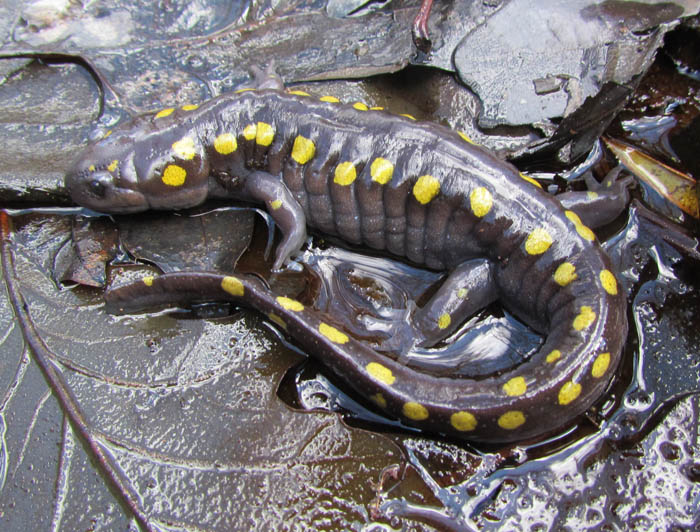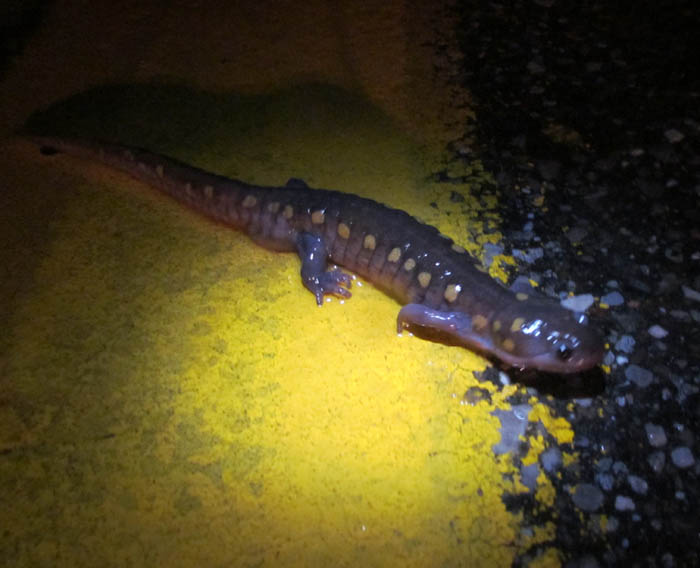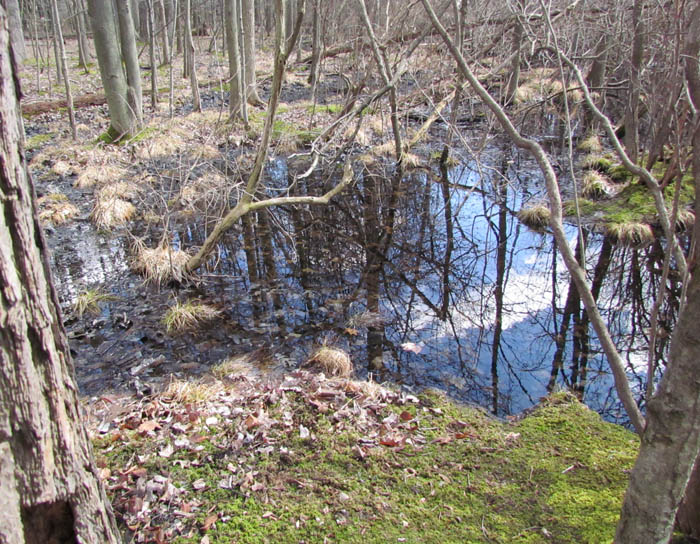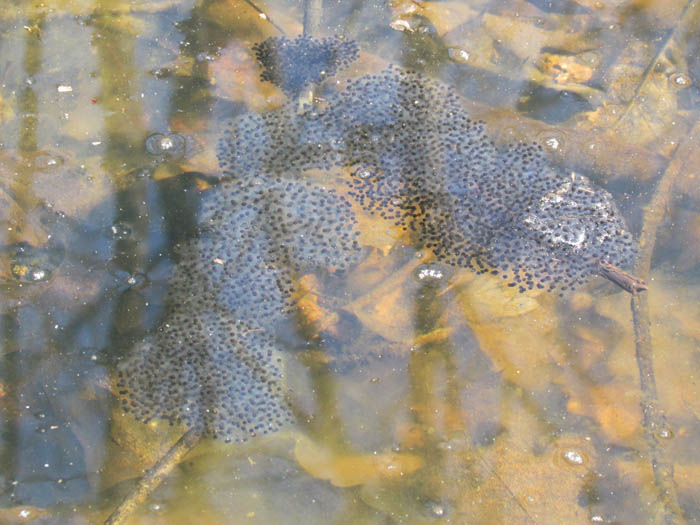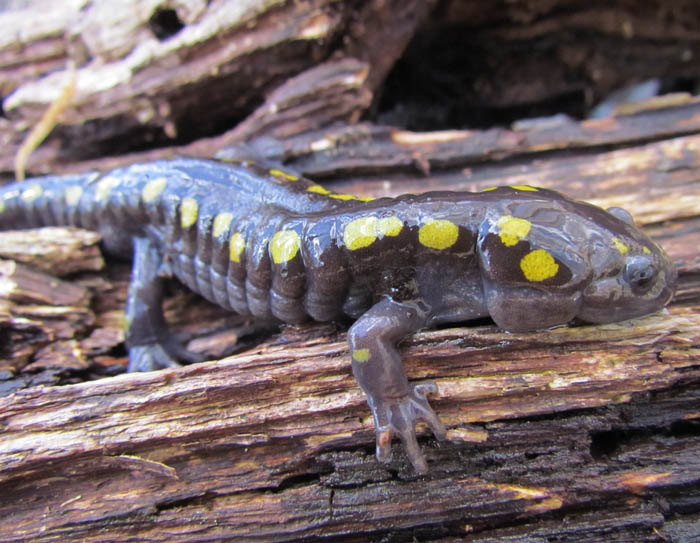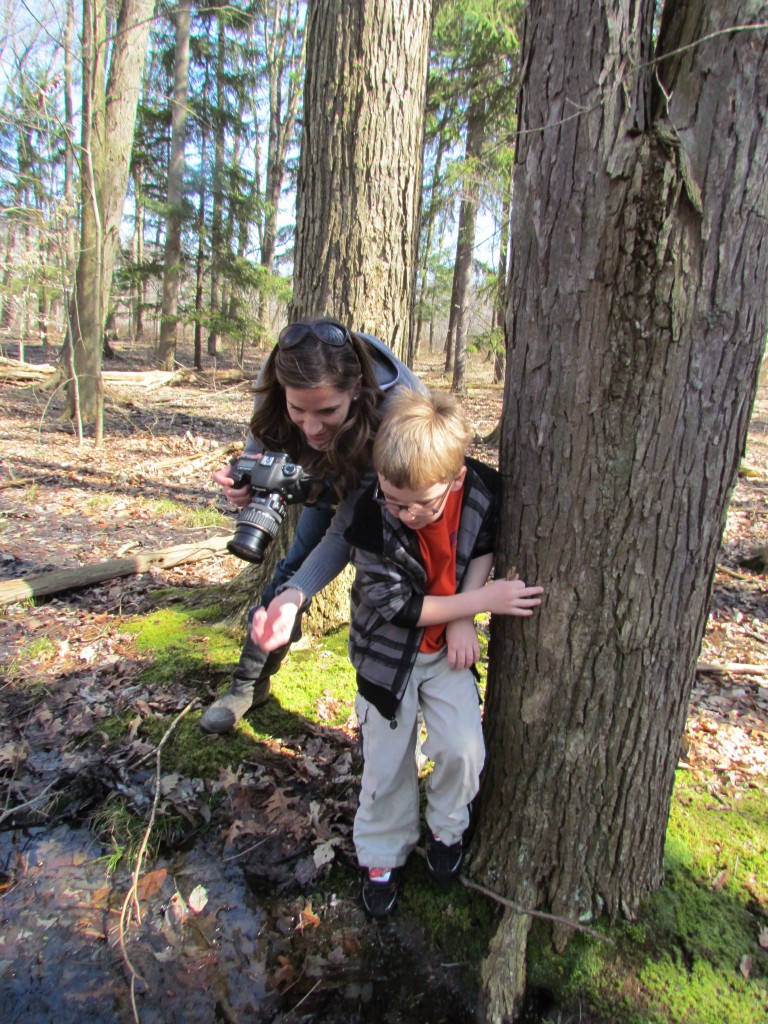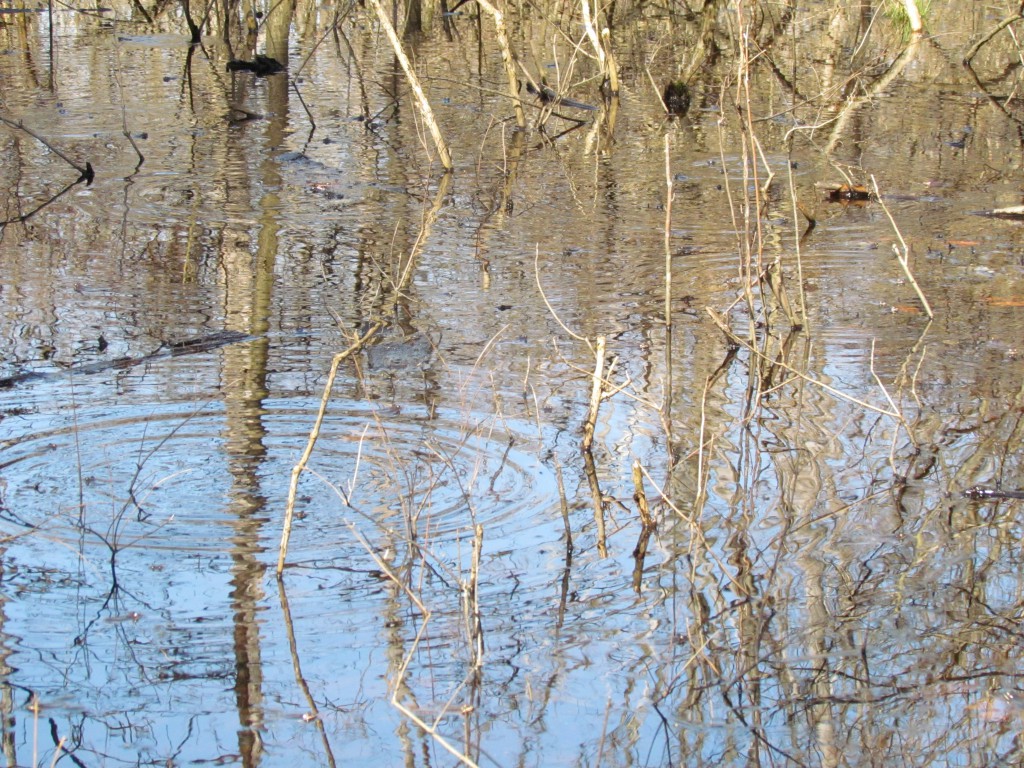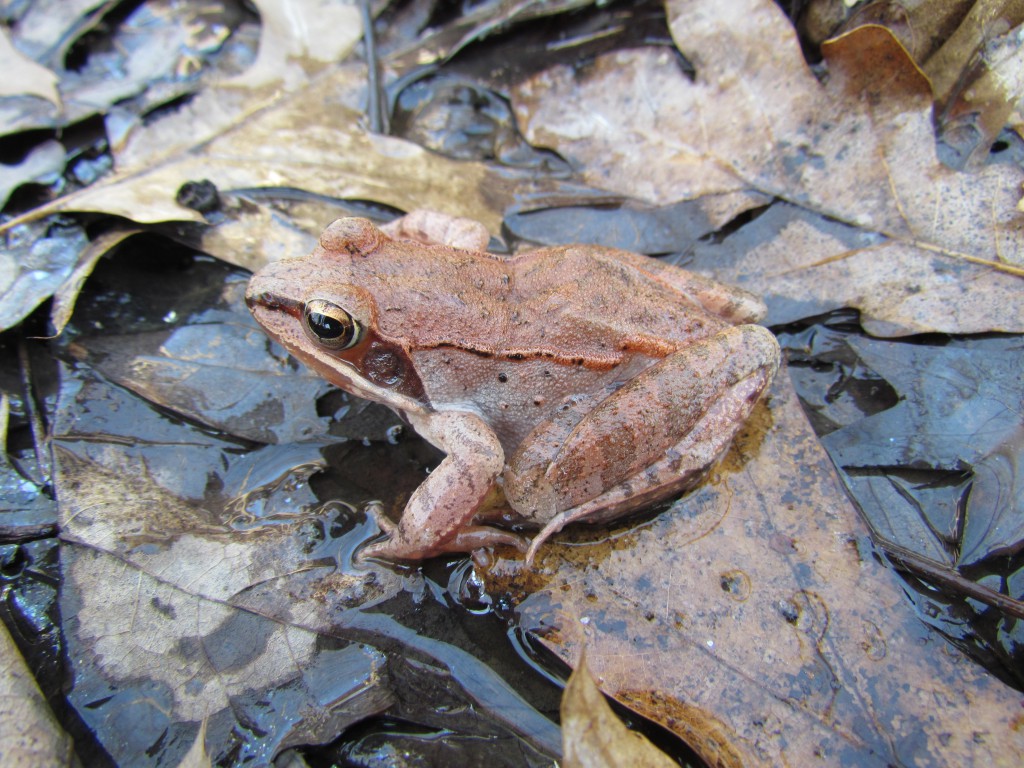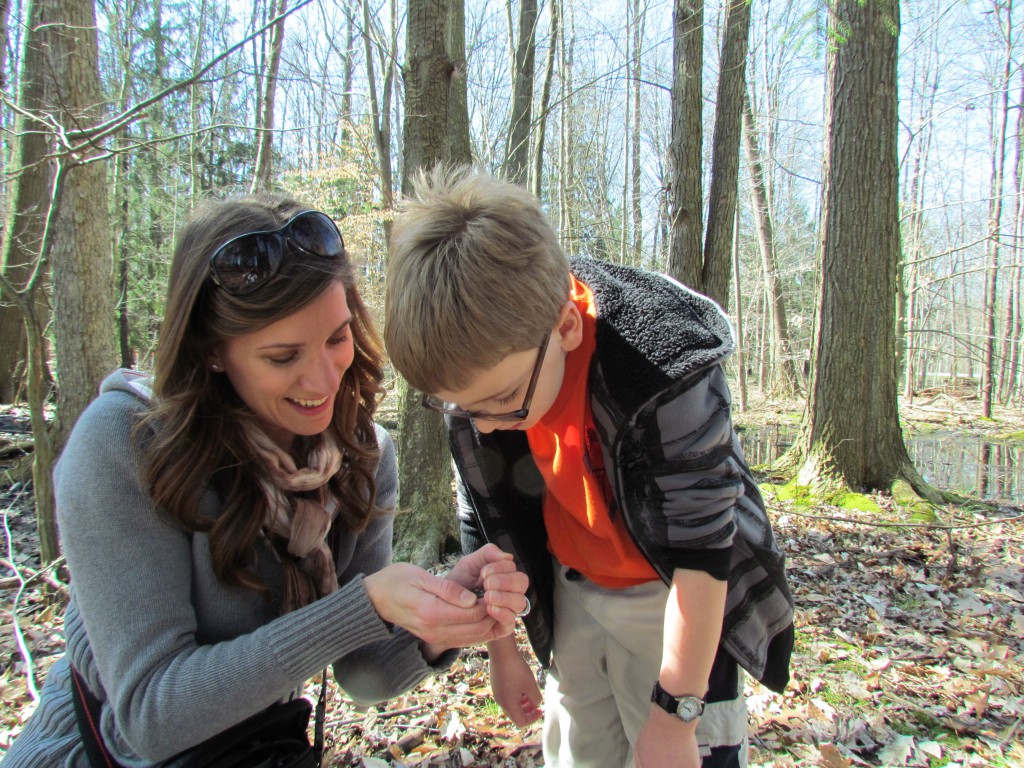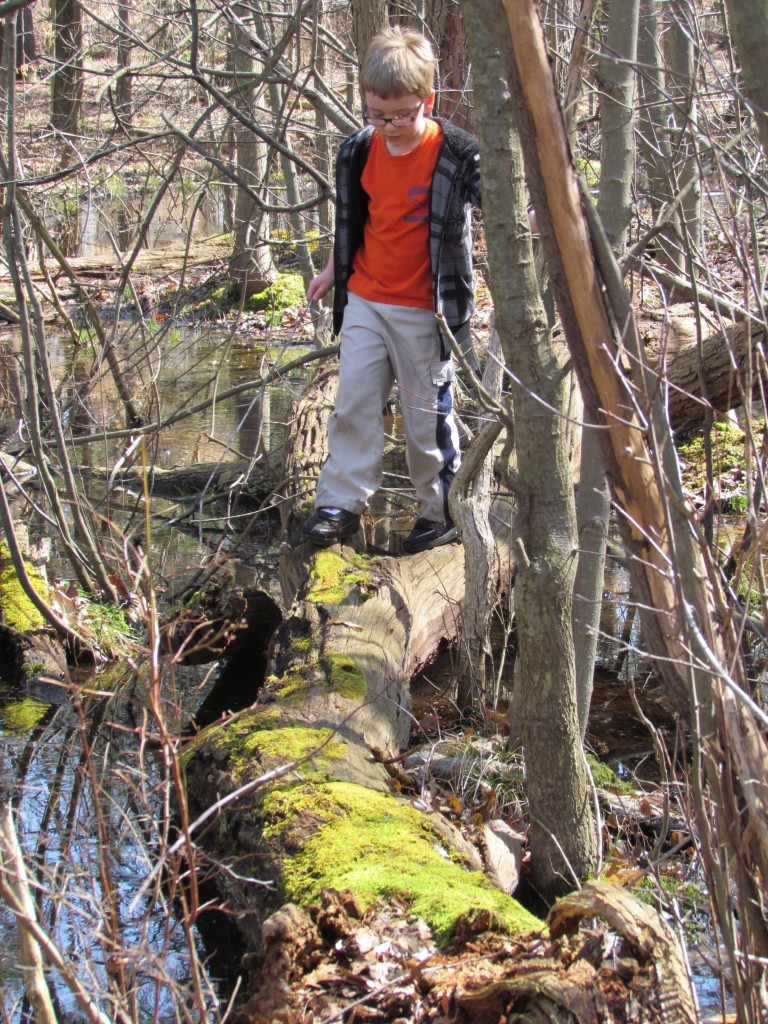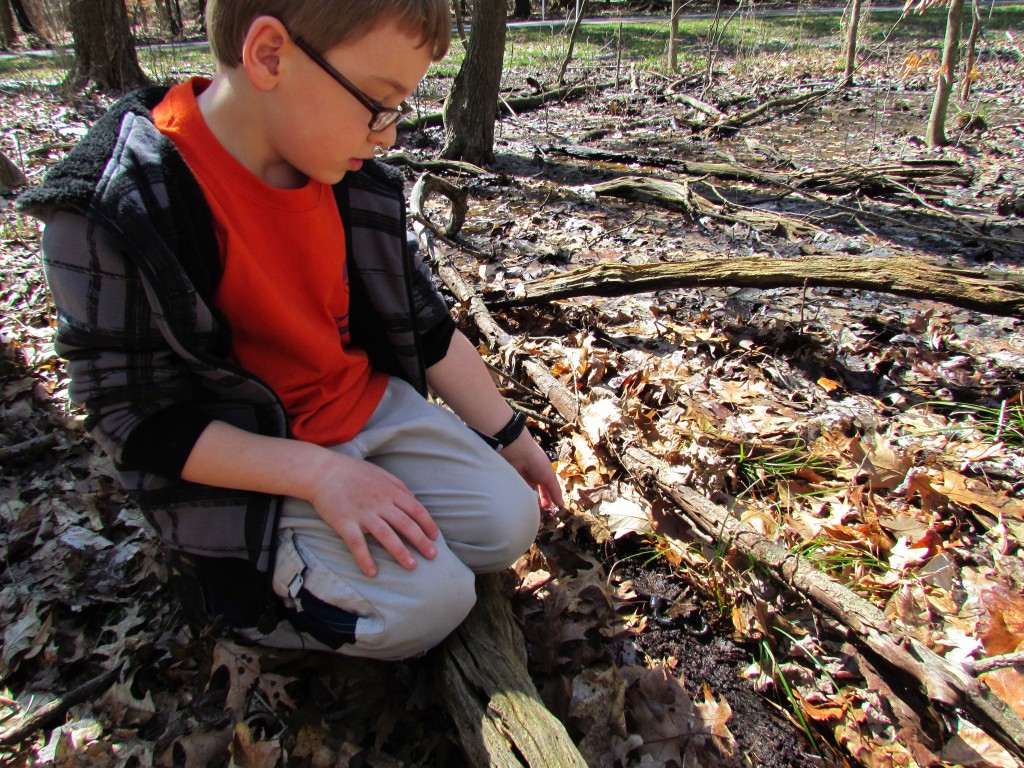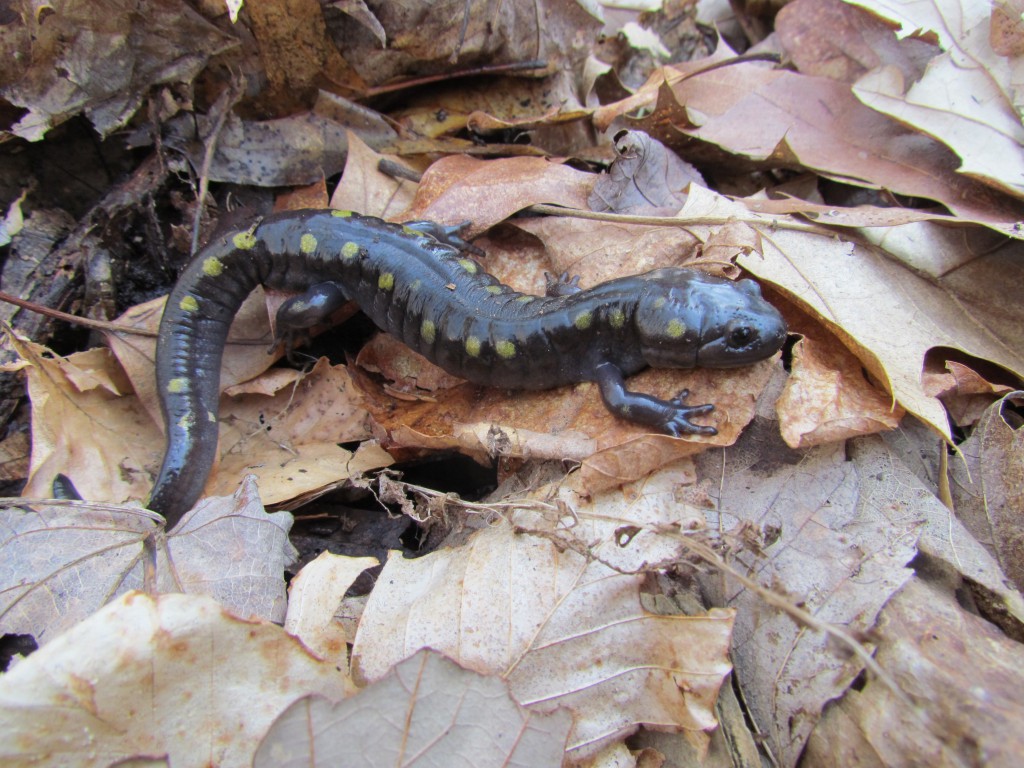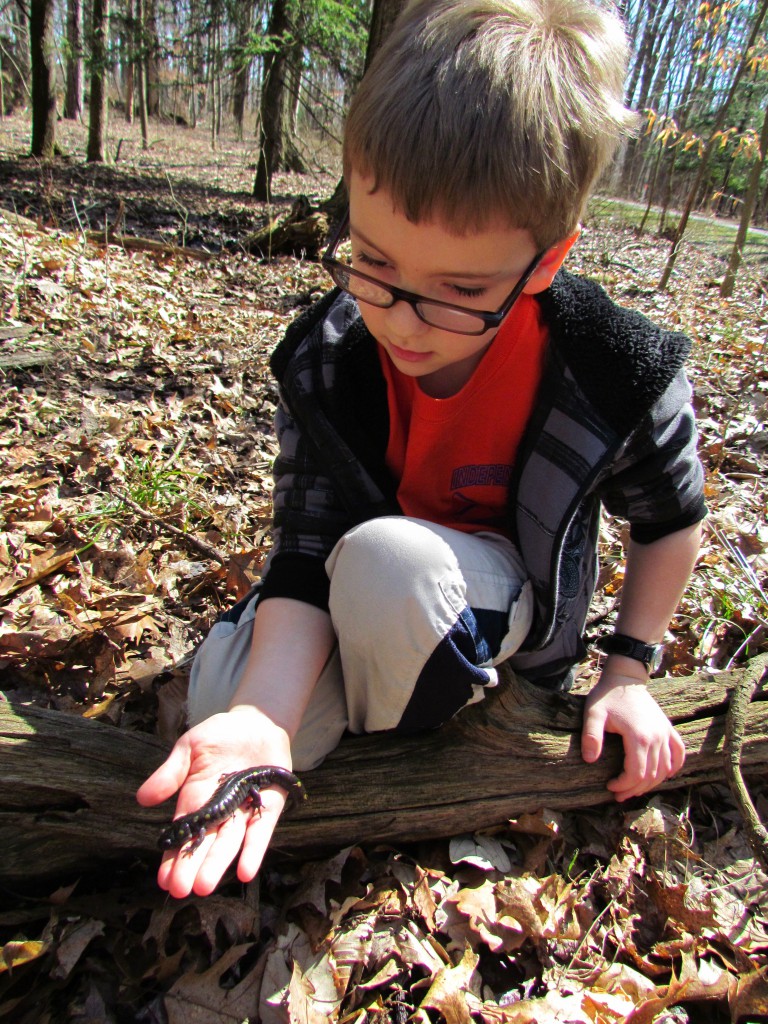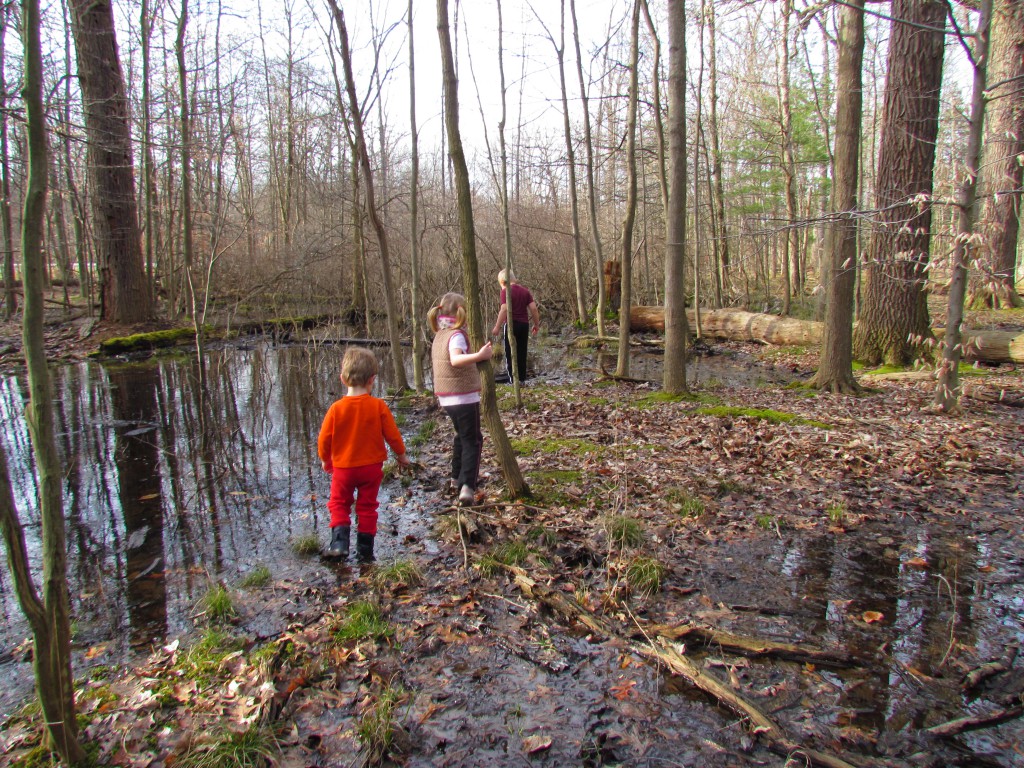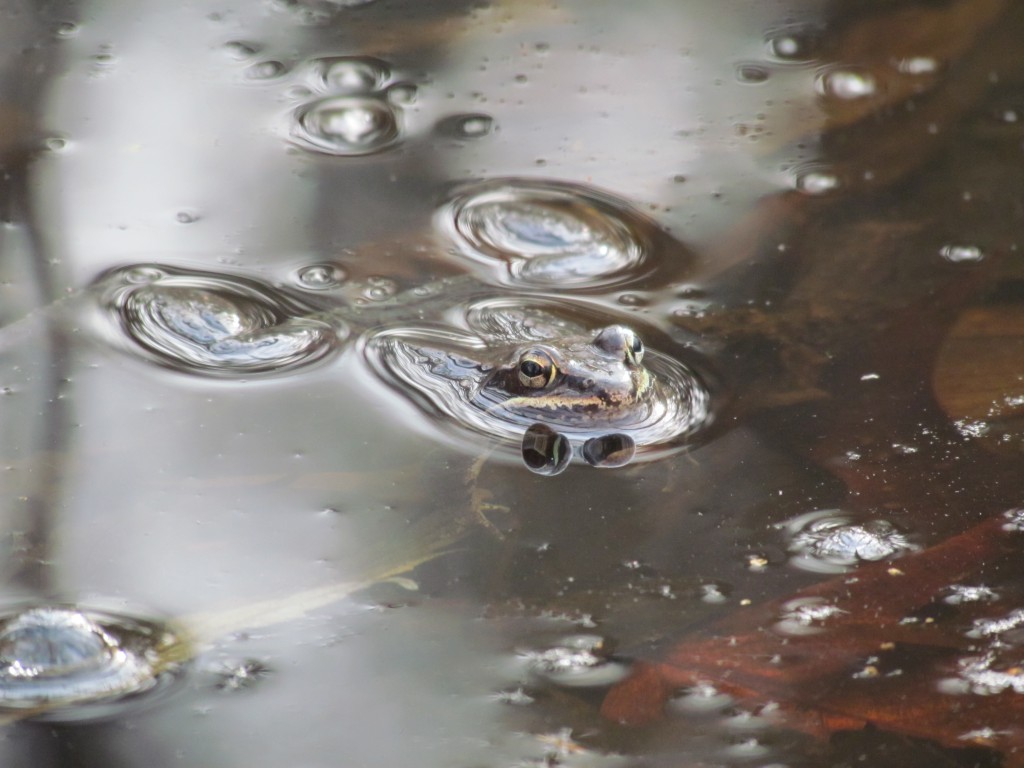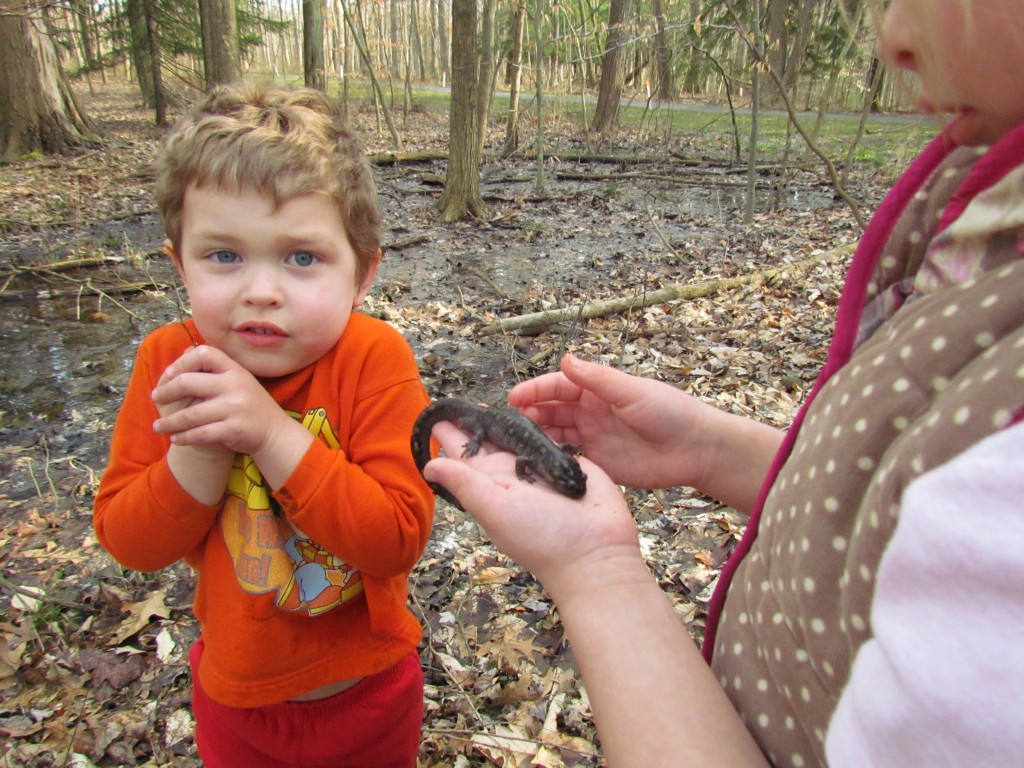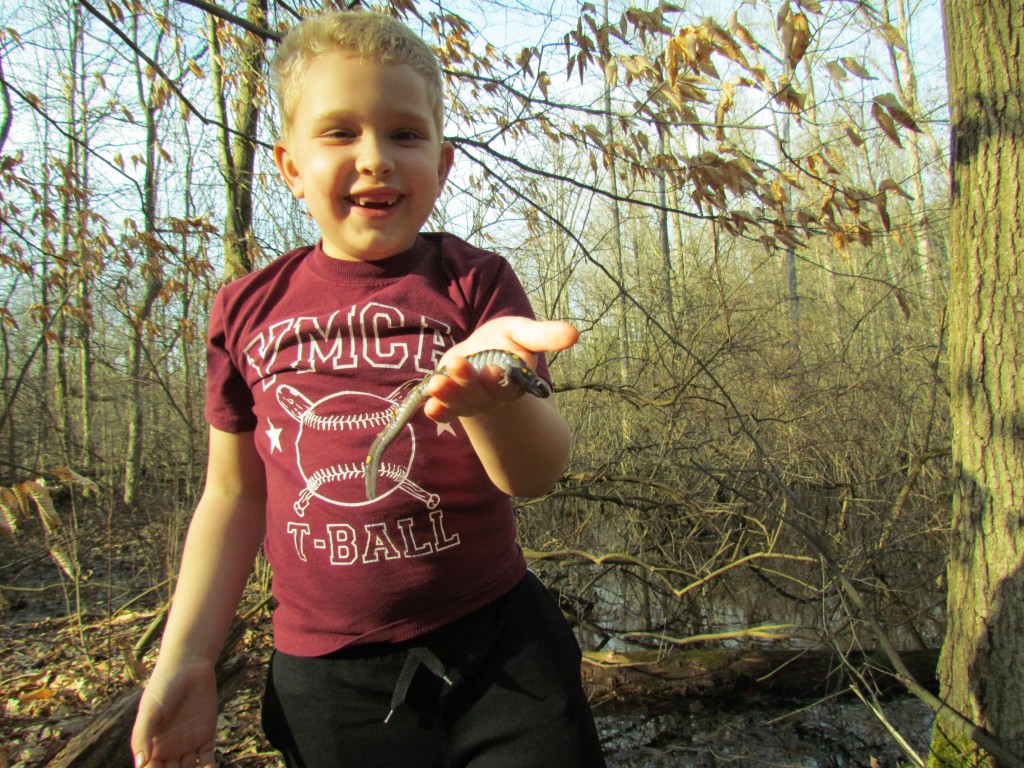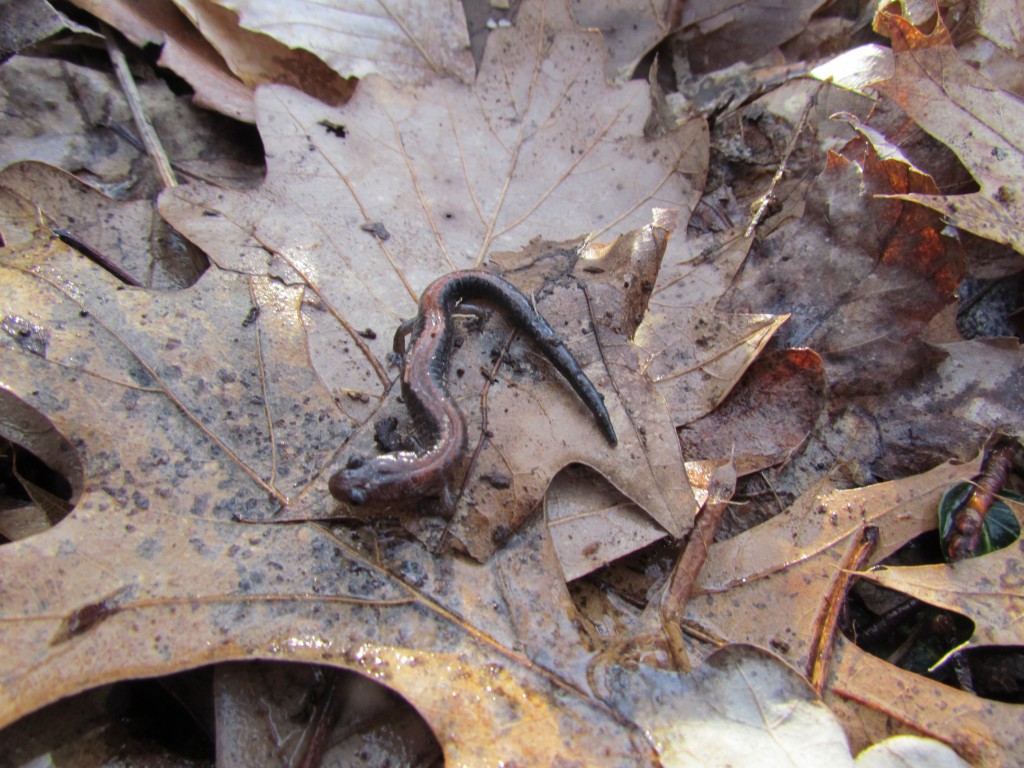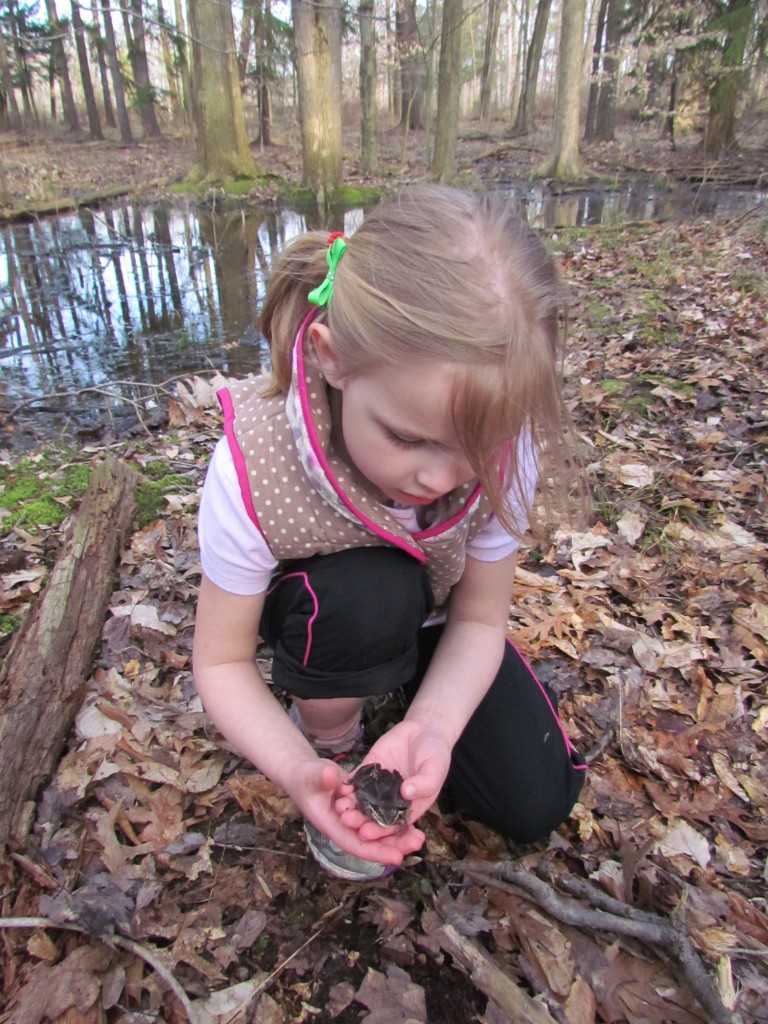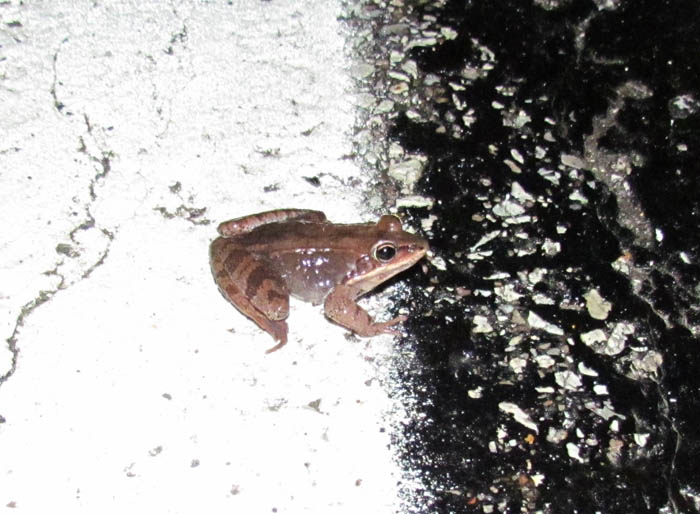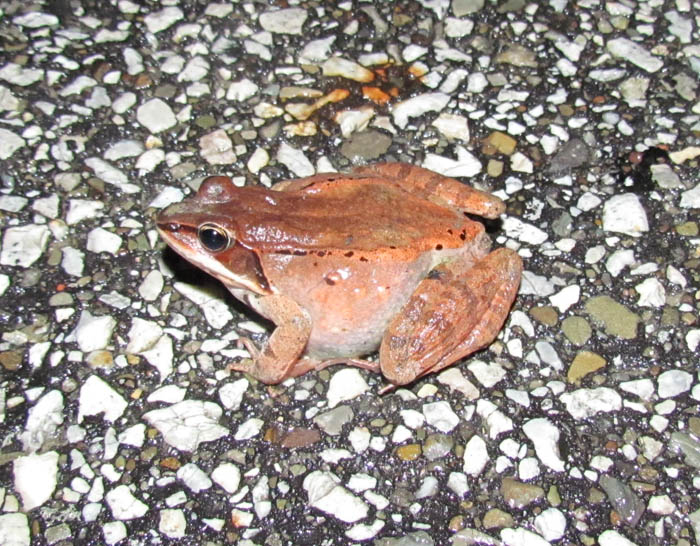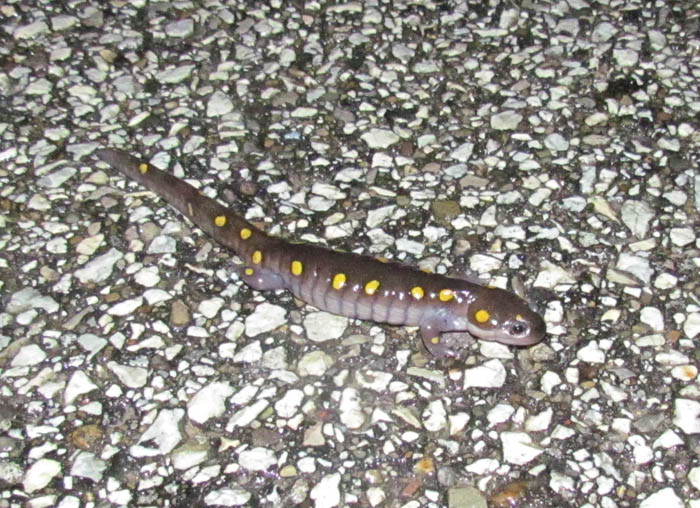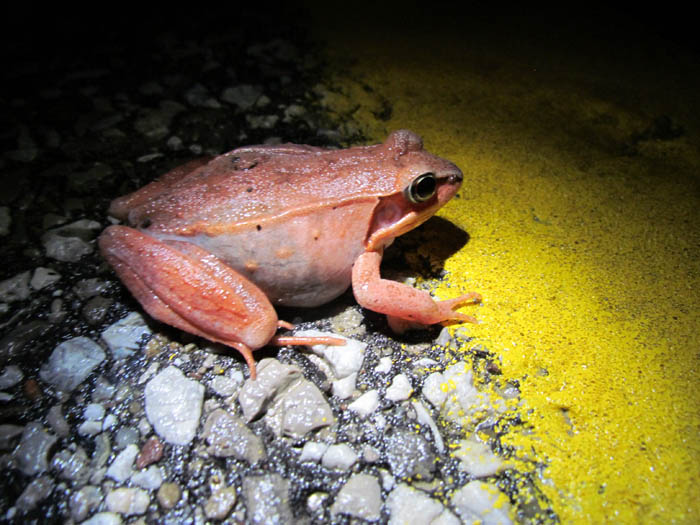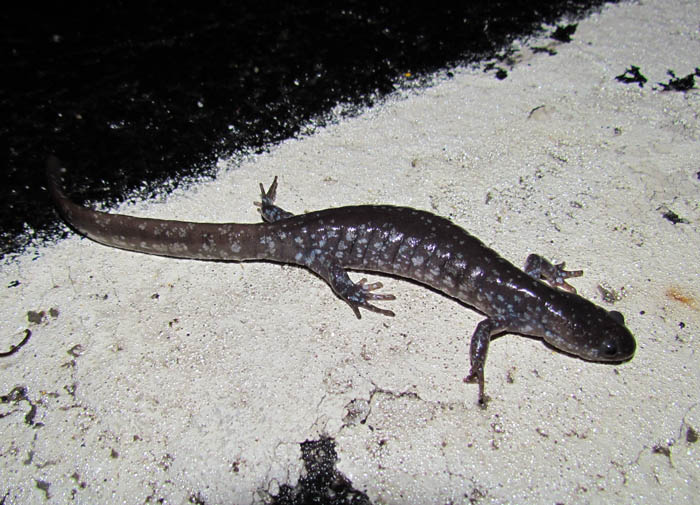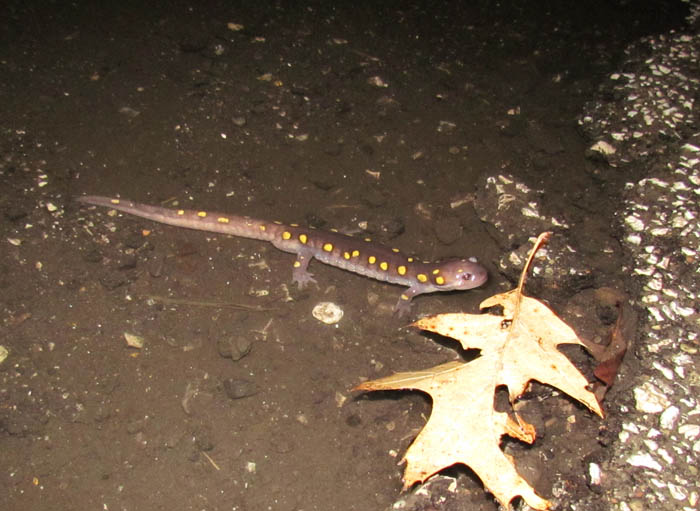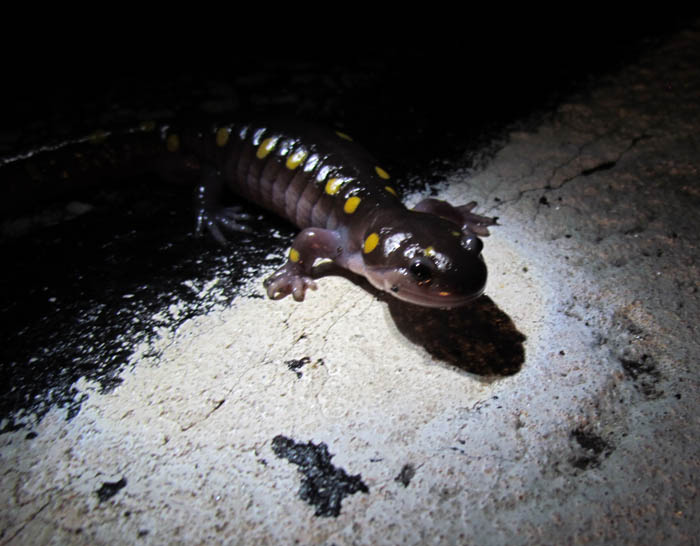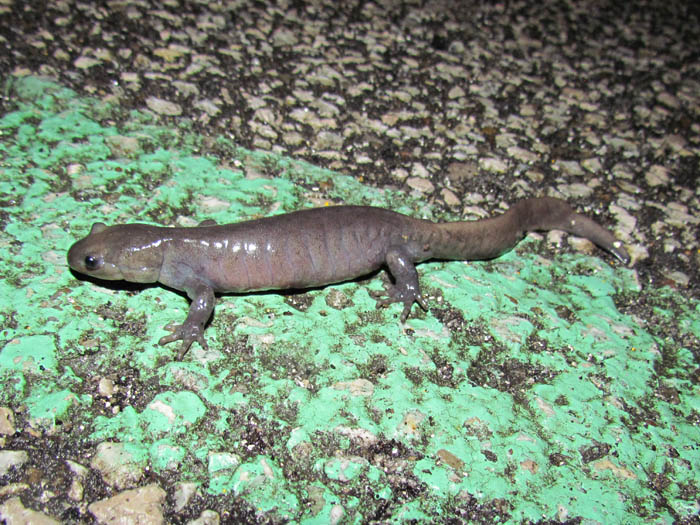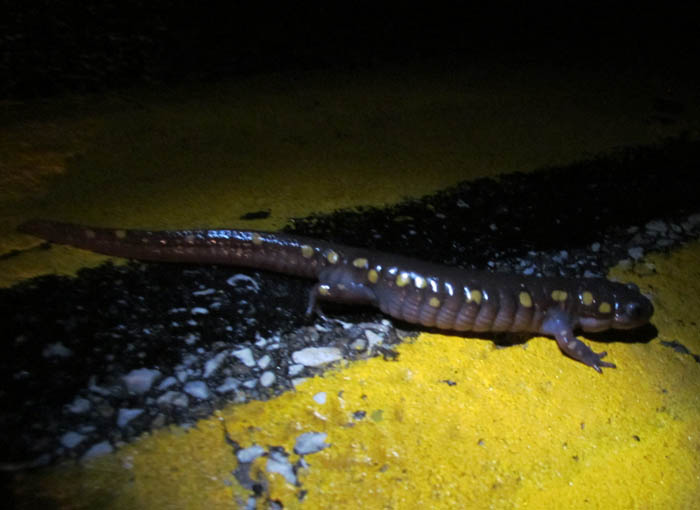Though it’s rather large and has a wide distribution, the Spotted Salamander is actually pretty hard to…spot. These stout-bodied amphibians spend most of their lives underground. They are usually found in low-lying hardwood forests.
Because of their subterranean lifestyle, they are seldom seen except in March. During an especially stormy night on March 11, many of these salamanders could be seen migrating after dark during the rainstorm.
They make their way to fish-less pools of water, but even then, they are only active at night. In their underwater courtship dance, the male swirls around, turns about and nudges the female.
Since it became so cold the days after the migration occurred, the amphibians have been in a sort of “suspended animation,” buried in the mud at the bottom of the pool. It warmed up in the last few days though and they are “back to business.”
Here’s what one of their fist-sized egg masses look like. The eggs expand after the salamander lays them. They are coated with a thick jellylike substance that holds all the eggs together, anchored to vegetation in the pool.
Visually striking, these eye-catching salamanders are grayish-black with two irregular rows of yellow or orange spots from head to tail. They range from 6 to 9 inches in length. This is an oddly patterned individual that I saw migrating last month.
Spotted Salamanders eat earthworms, snails, slugs, spiders, millipedes, centipedes, pillbugs and insects. In the wild, they typically live for about 20 years, though some have been reported to be as old as 30.
I look forward to seeing Spotted Salamanders each year; not only is it a chance to observe a large number of amphibians, but it is also a sign that a few months of nice weather is just around the corner.

